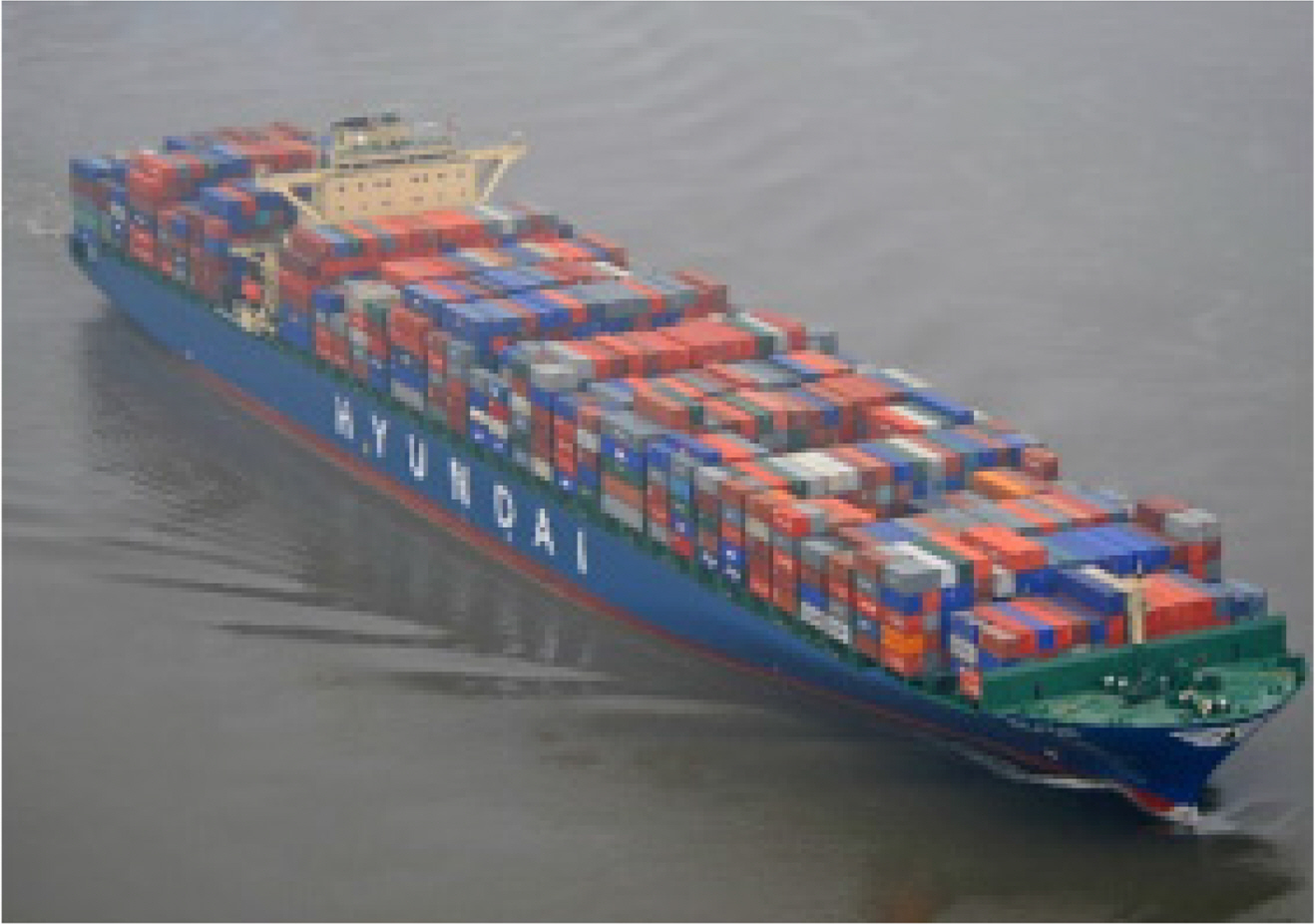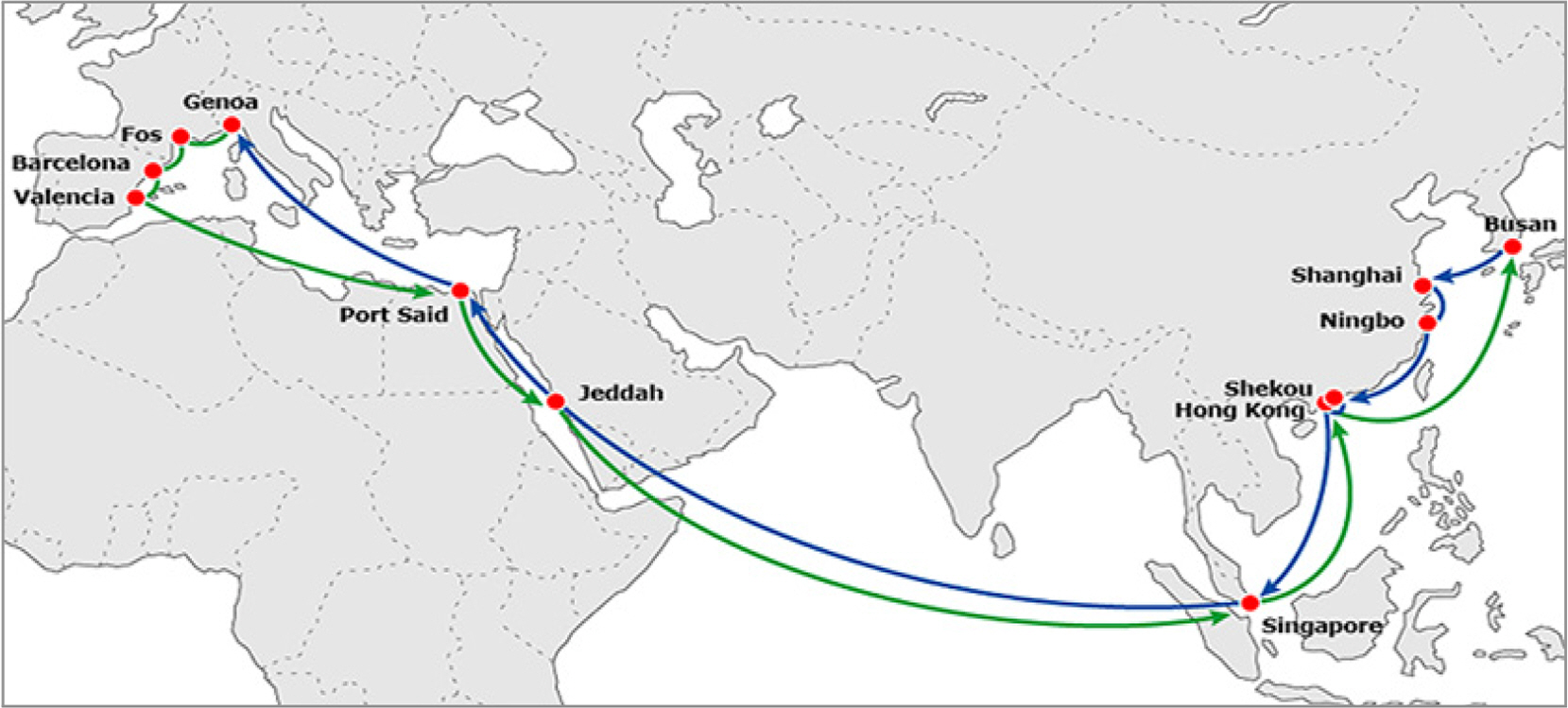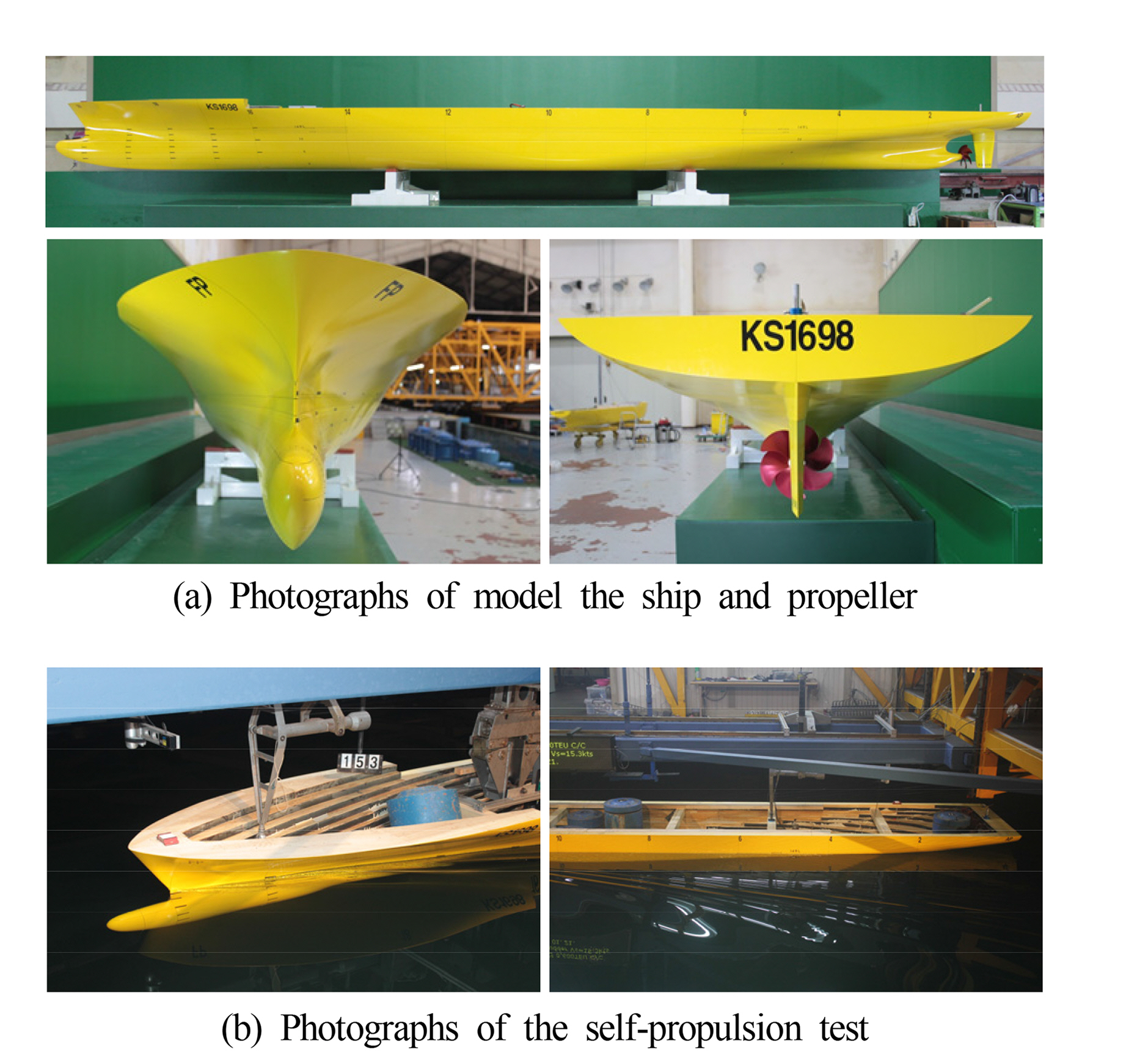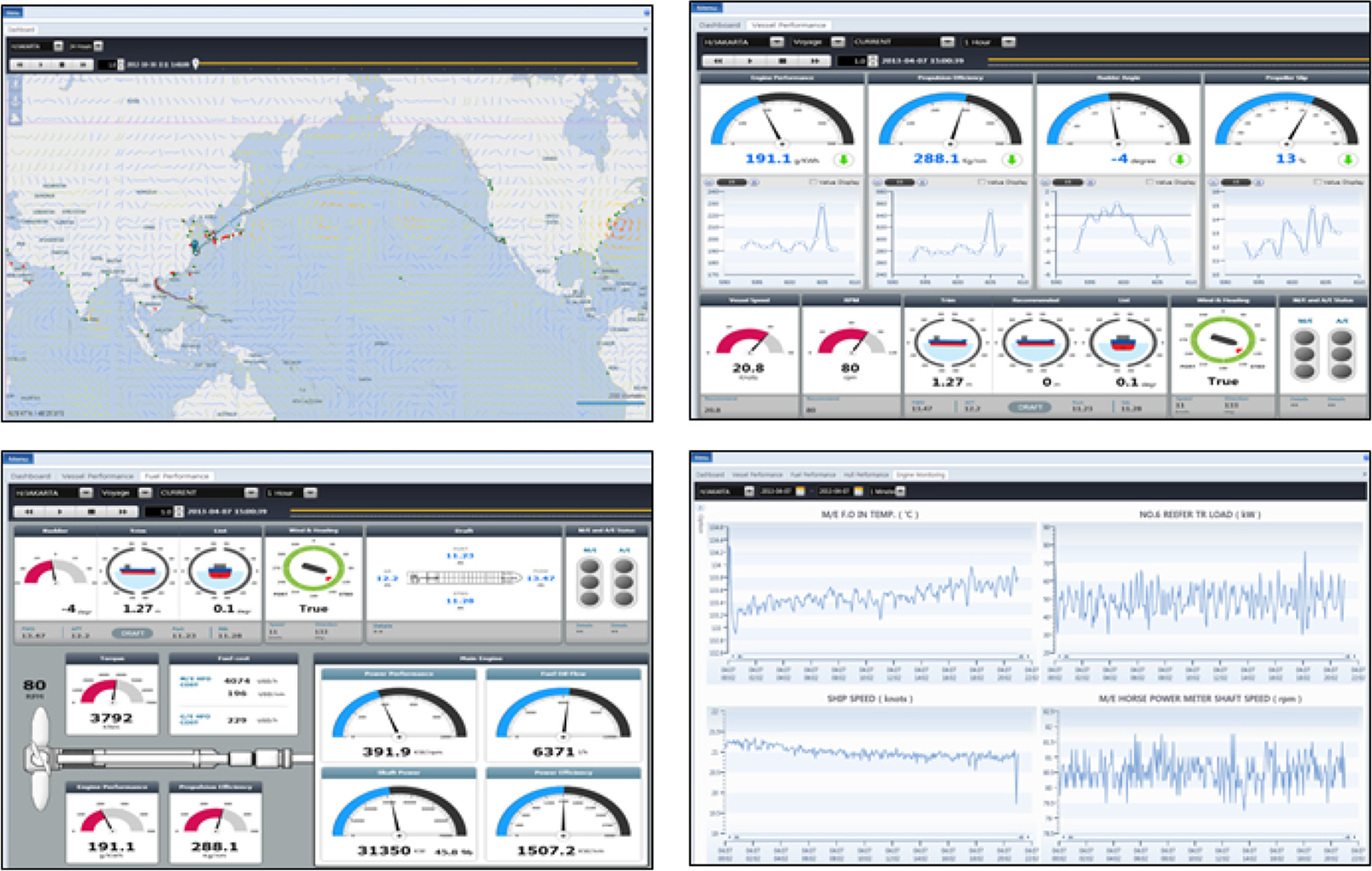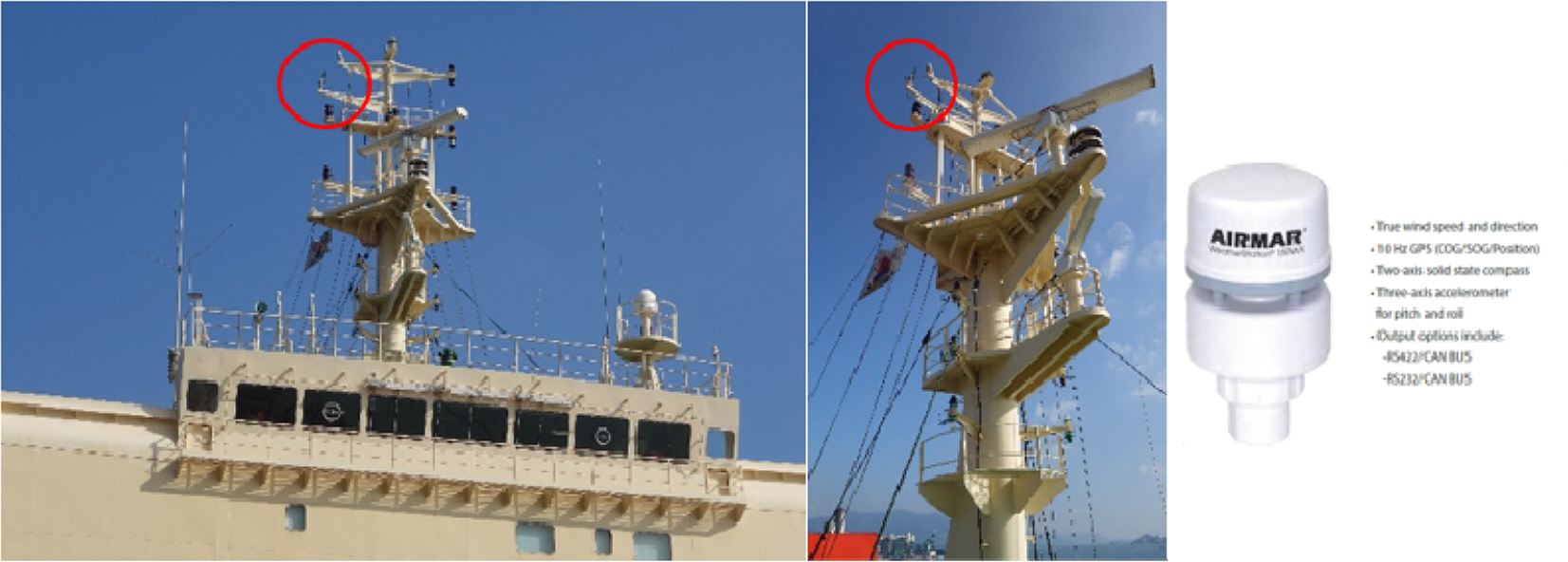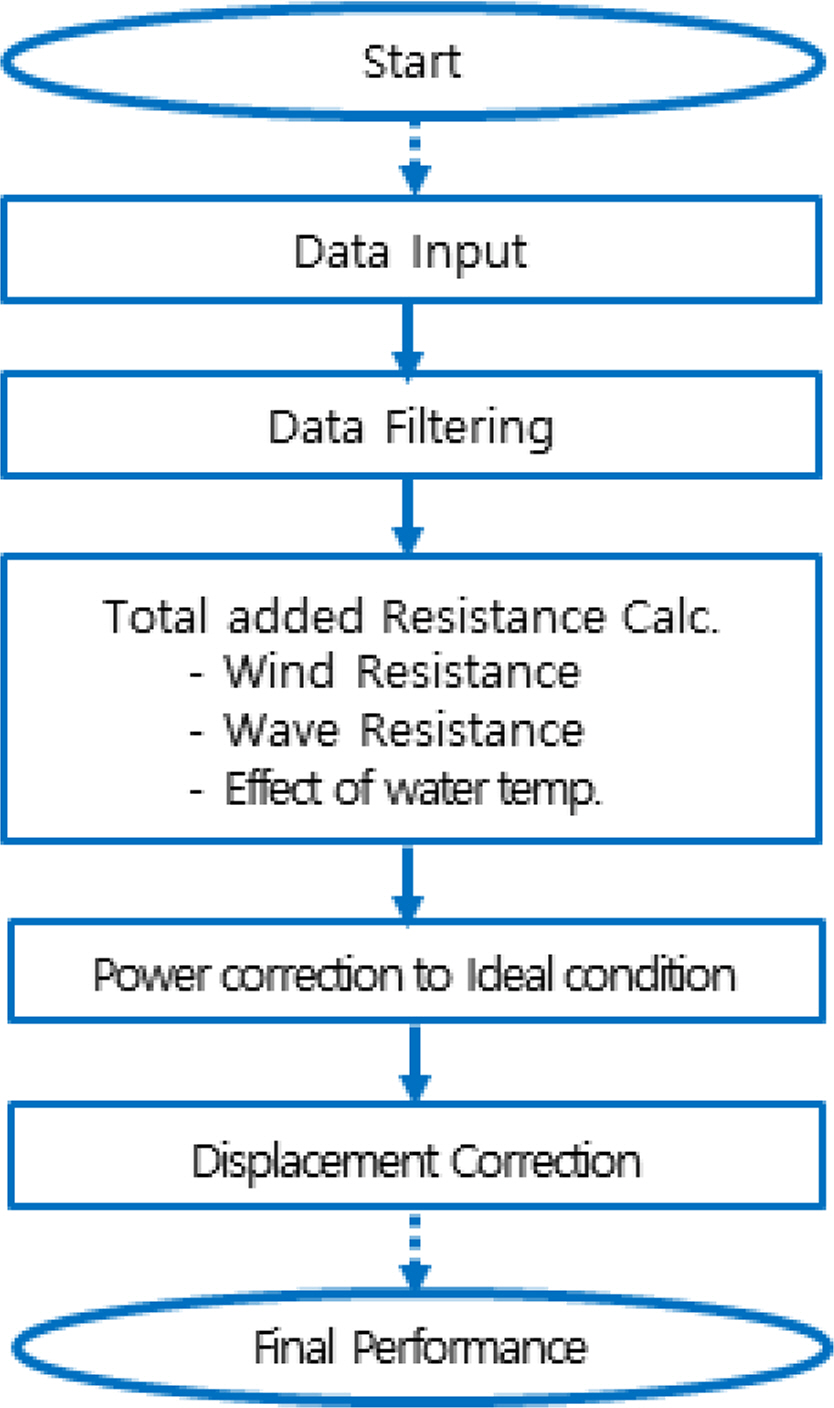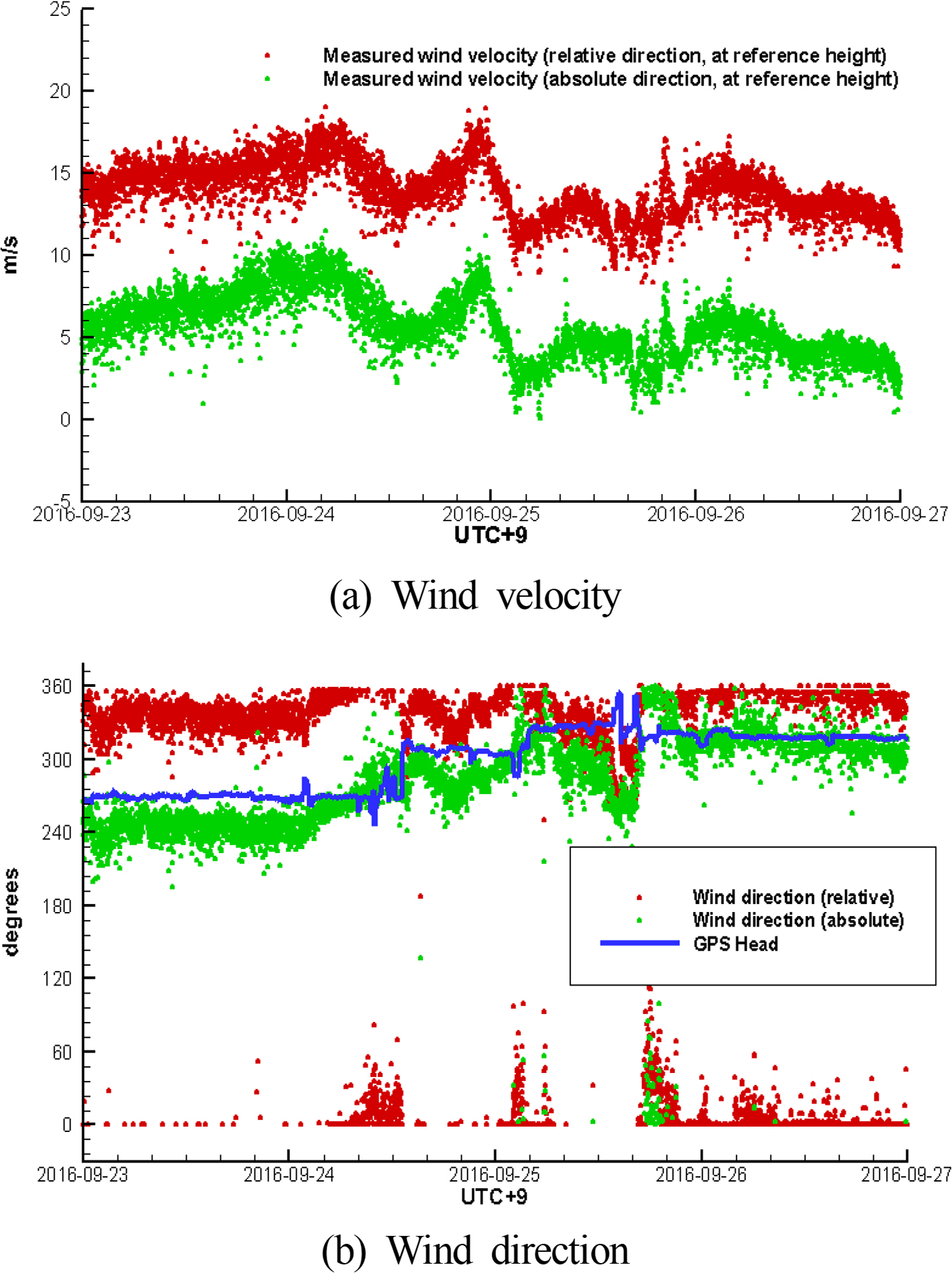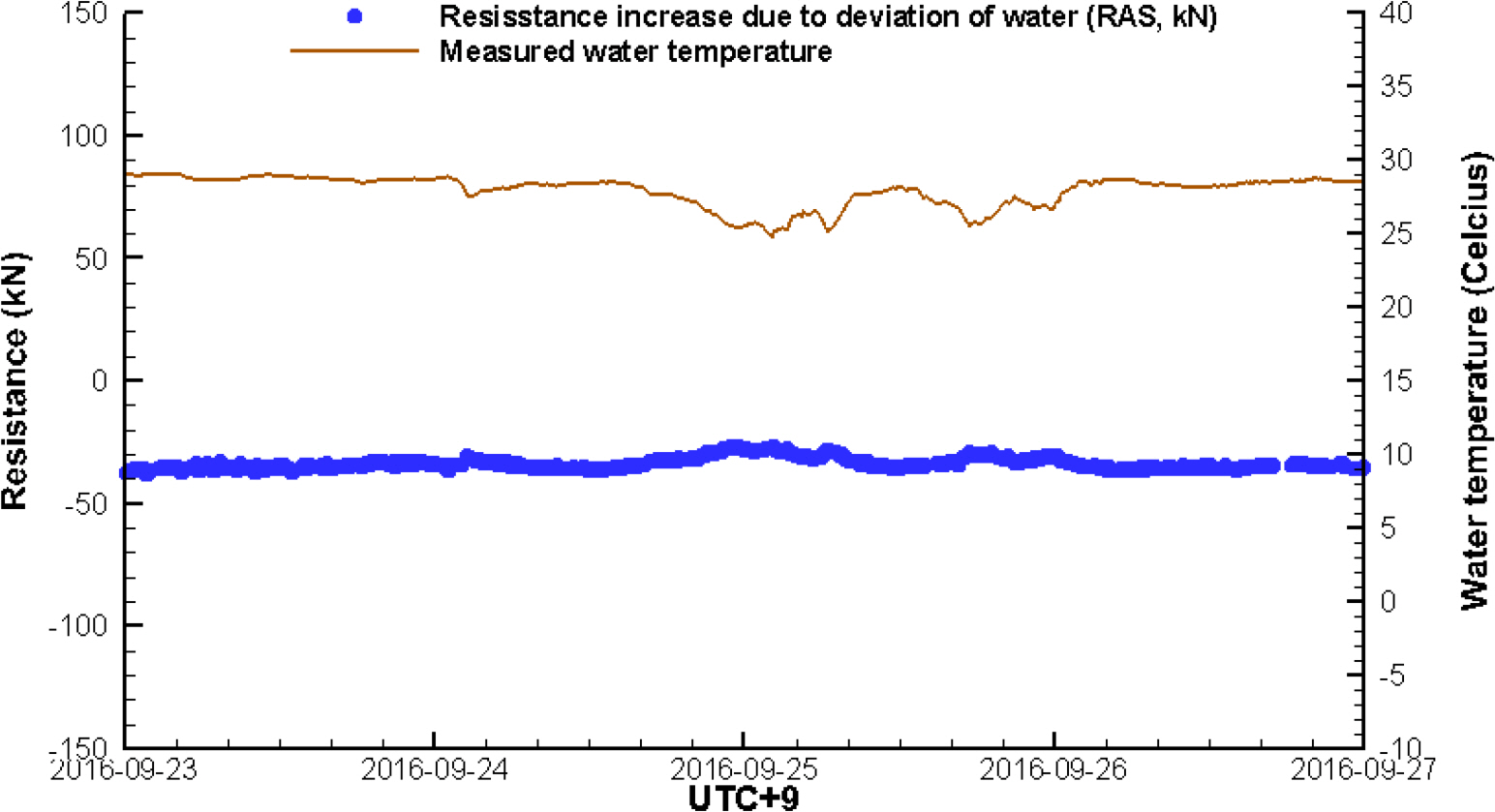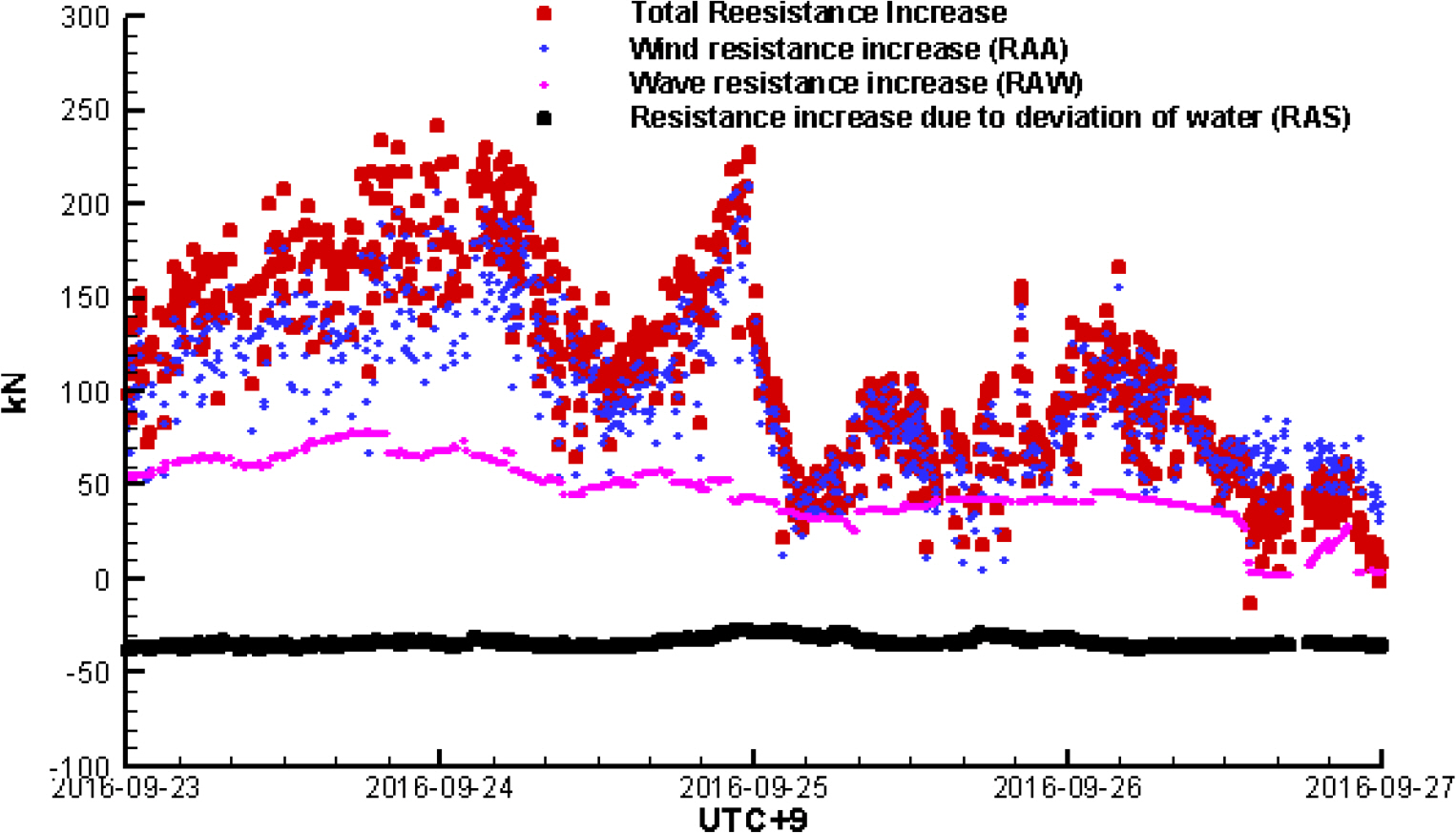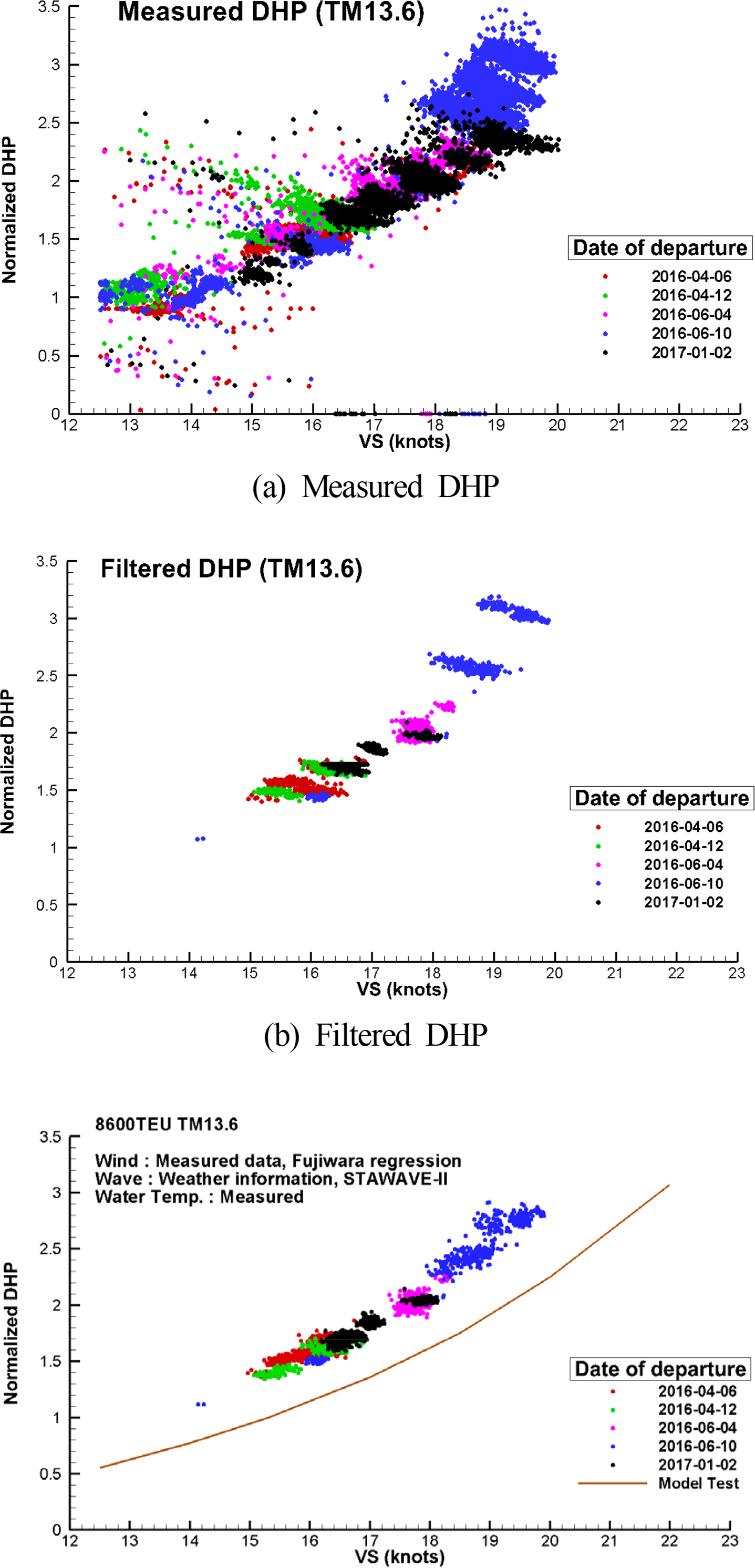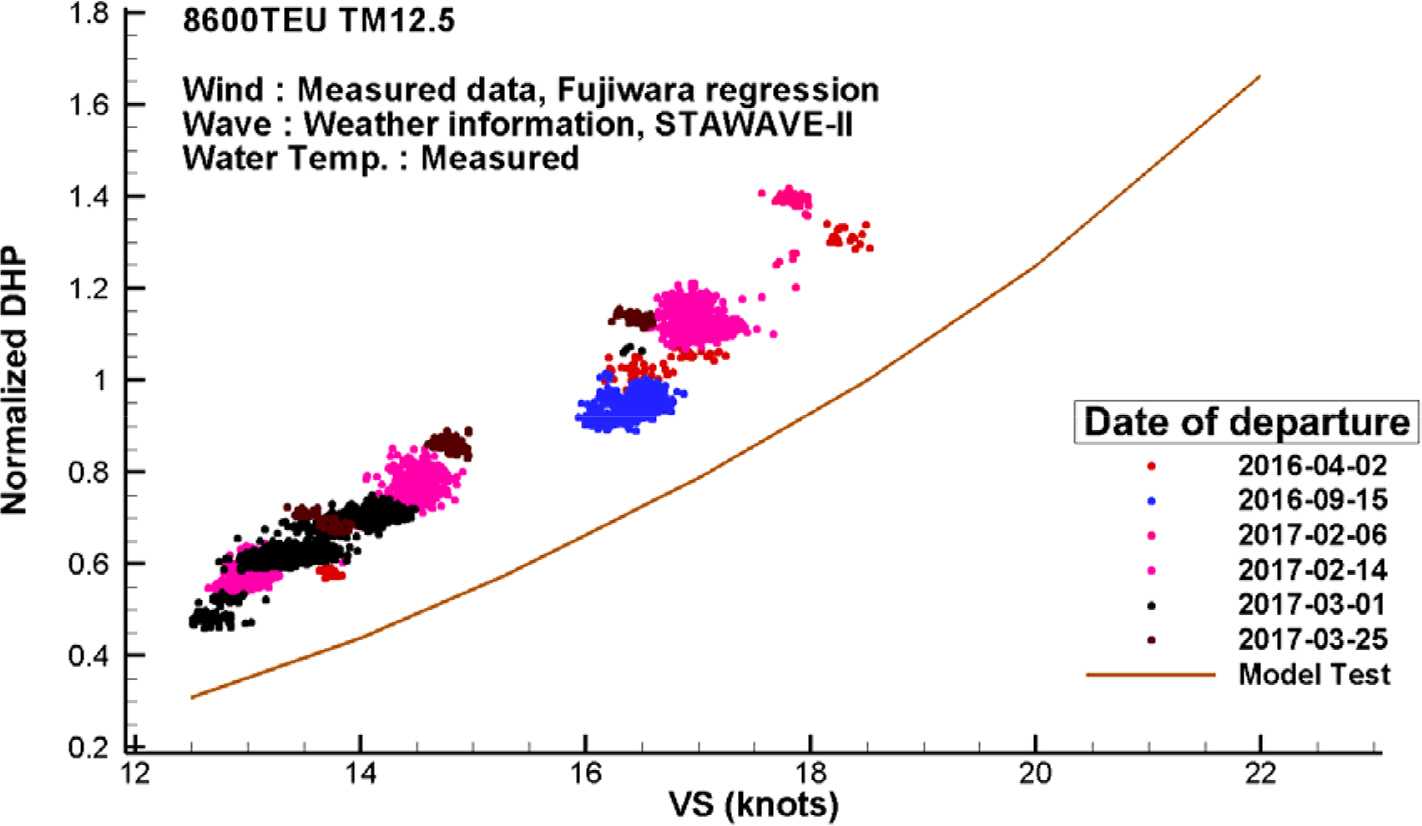1. Introduction
2. Ship Data and Standard Operating Conditions
2.1 Data of Target Ship
2.2 Standard Operating Condition
3. The Actual Ship’s Performance Estimation and Data Measurement
3.1 Tank Test
3.2 The Actual Ship’s Data Measurement and Collection
4. Speed-power Analysis
4.1 Speed-power Analysis Procedure
4.2 Speed-power Analysis
4.2.1 Comparison of the air resistance based on air resistance factor
4.2.2 Total added resistance calculation
4.2.3 Speed-power analysis using SPA
5. Conclusion
This study attempted to perform speed-power analysis of the currently existing ship by supplementing the operation data monitoring system of ship operators and analyzing the weather forecasting data. Applying the ISO15016:2015 standard, which is used in analyzing the speed trial data of new ships, algorithm and the analysis program SPA were developed. The measured data and analysis result were valid, and the resistance propulsion performance of the currently existing ship were identified.
The added resistance due to wind using air-resistance coefficients based on the Fujiwara regression formula (ISO15016: 2015) and CFD simulation (Ryu et al., 2016; Jeon et al., 2017) were compared. Although there was a small difference in the air-resistance coefficients, both methods provided a sufficient level of accuracy in speed-power analysis. It can be said that both methods estimated the added resistance due to wind with a high accuracy to the extent that differences were hardly noticeable in the result of speed-power analysis.
The speed-power analysis results in two draft conditions of the target ship, i.e., 8,600 TEU Container ship, show a satisfactory trend line compared with the result of model test. And they present appropriately the increase in power due to the deterioration of the ship hull in a qualitative manner.




